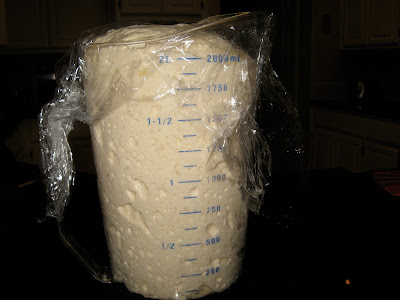
My husband frequently comments on how I can cook dinner and maintain conversations with all of the members of my household and advance the laundry and answer the phone all at the same time. Distracted cooking is not really challenging for me. It kinds of fits with our family lifestyle.
Now distracted baking may be another thing all together. I am writing my final paper for what has been a challenging, annoying grad school course. The problem with online classes is that you are limited in your interaction with your professor and that he/she can post a comment onto your work that doubles or triple the amount of work that you have to do without any effort on their part. Maybe it is distracted teaching. Maybe there is a purpose to it.
I am waiting for this class to be over, but I am thinking about my paper and working on my paper while making Hamelman's sourdoughs with whole wheat and with increased whole grain. Distracting baking, perhaps not a good idea.
I made the levains last night. It is hot, humid and heavy here in Texas. Nothing is going to take more than 12 hours to be ready.
I assembled my mis en place for the whole wheat.

Mixed the flours, levain, and water. Waited for the autolyse phase to end, added the salt, mixed for 2 minutes and put it aside for fermentation.
The I assembled my mis en place for the increased whole grain. Can you spot a significant difference between the two mis en places.

I mixed the flours, levain, and water and made liquid slop.
Ah, distracted baking. Did I check the errata sheet before I started baking? No. Did I check out the Mellow Baker's web site, too easy. Look at the differences in bread flours between the two loaves. My increased whole grain mis en place had 8 oz which, we all know is not 5.5 cups. Not the 1 pound, 8 oz that the recipe actually needs.
It didn't take me long to notice the mistake. When I combined the ingredients, I made dough batter. No pictures because I was working so quickly to correct the error so the rye didn't turn into gluten mess. I added extra flour to what I hope is the correct proportions.
Perhaps now would be a good time for all of us to go through the errata sheet and make the necessary corrections. Or we could all work on our papers.
The dough fermented for two hours and then was shaped. The whole wheat loaf was easy to work with.

I am concerned about the increased whole grain. It has huge air bubbles, and is a little looser than I would prefer.

I ended up with some beautiful looking loaves. The ones on the left are the increased grain.

The rye is slightly darker. The both have a nice flavor.



















